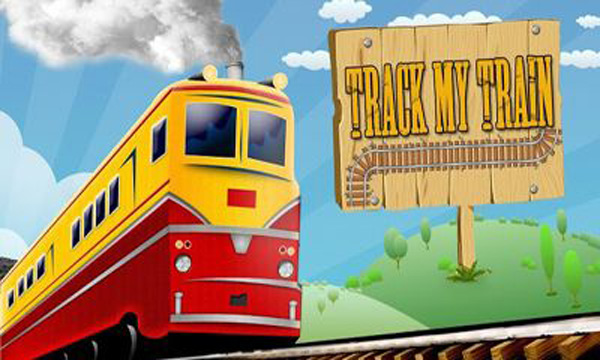Introduction:
Train tracks, the backbone of railway transportation systems, weave across landscapes, connecting cities, towns, and regions, facilitating the movement of passengers and goods. The vast network of train tracks spans continents, traversing diverse terrains and environments. In this article, we delve into the intricacies of train tracks, exploring their location, construction, and significance within the broader context of railway infrastructure.
The Basics of Train Tracks:
Train tracks, also known as railways or railroads, consist of parallel steel rails laid on a bed of ballast, typically made of crushed stone or gravel. These rails provide a stable foundation for trains to travel upon, guiding their wheels and distributing the weight of the rolling stock. Train tracks are designed to withstand heavy loads, high speeds, and varying weather conditions, making them essential components of modern transportation systems.
Types of Train Tracks:
Train tracks come in various configurations and gauges to accommodate different types of trains and operating conditions. The most common types of train tracks include:
Standard Gauge: Standard gauge tracks have a distance of 1,435 millimeters (4 feet 8.5 inches) between the inner edges of the rails and are widely used in many parts of the world, including Europe, North America, and parts of Asia.
Narrow Gauge:
Narrow gauge tracks have a distance narrower than the standard gauge and are typically used in mountainous regions, rural areas, or for heritage and tourist railways. The gauge width varies depending on the specific railway and can range from around 600 millimeters to 1,067 millimeters.
Broad Gauge:
Broad gauge tracks have a distance wider than the standard gauge and are primarily found in countries such as India, Russia, and parts of South America. The broader gauge allows for increased stability and capacity, particularly for freight transportation.
High-Speed Tracks:
High-speed tracks are specially designed to accommodate trains capable of operating at speeds exceeding conventional passenger or freight trains. These tracks feature advanced signaling systems, smoother curves, and optimized gradients to support high-speed travel safely and efficiently.
Factors Influencing Track Location:
The location of train tracks is influenced by a myriad of factors, including geographical, environmental, economic, and engineering considerations. Some key factors determining track location include:
Topography:
The natural landscape, including mountains, valleys, rivers, and plains, plays a significant role in determining the alignment and route of train tracks. Engineers must navigate terrain obstacles to create optimal track layouts that minimize gradients, curves, and construction costs.
Population Centers:
Train tracks are often routed to connect population centers, such as cities, towns, and industrial hubs, to facilitate passenger and freight transportation. The proximity to major population centers influences track density, capacity, and service frequency.
Economic Viability:
The economic feasibility of constructing and maintaining train tracks is a crucial consideration in track location decisions. Factors such as projected demand for transportation services, potential revenue streams, and available funding sources impact investment decisions in railway infrastructure.
Environmental Impact:
Train tracks must comply with environmental regulations and minimize their impact on sensitive ecosystems, wildlife habitats, and natural resources. Environmental assessments and mitigation measures are conducted to ensure that railway projects are environmentally sustainable.
Construction and Maintenance:
The construction of train tracks is a complex and labor-intensive process that involves several stages, including surveying, grading, laying track, installing ballast, and constructing bridges, tunnels, and other infrastructure. Modern track construction techniques utilize advanced machinery, materials, and technologies to ensure durability, safety, and efficiency.
Once constructed, train tracks require regular inspection, maintenance, and repair to ensure safe and reliable operation. Maintenance tasks include track inspection, rail replacement, ballast replenishment, vegetation management, and signal system maintenance. Regular maintenance helps prevent track defects, reduce downtime, and prolong the lifespan of railway infrastructure.
Significance of Train Tracks:
Train tracks are vital arteries of transportation, facilitating the movement of people, goods, and resources across vast distances. The significance of train tracks extends beyond mere infrastructure; they are symbols of connectivity, progress, and economic development. Key aspects of their significance include:
Economic Growth:
Train tracks support economic growth by enabling the efficient transportation of raw materials, finished goods, and commodities. Rail transportation contributes to job creation, trade expansion, and regional development, driving economic prosperity and competitiveness.
Sustainability:
Train tracks offer a sustainable mode of transportation with lower carbon emissions compared to road and air transportation. Railways play a crucial role in reducing greenhouse gas emissions, alleviating traffic congestion, and promoting sustainable urban development.
Social Connectivity:
Train tracks foster social connectivity by linking communities, facilitating travel, and fostering cultural exchange. Rail travel provides affordable, accessible, and inclusive transportation options for people of all backgrounds, fostering social cohesion and mobility.
Resilience: Train tracks contribute to the resilience of transportation networks by providing alternative routes and modes of transportation during emergencies, natural disasters, or disruptions to other transportation systems.
Conclusion:
Train tracks are the lifelines of railway transportation systems, serving as conduits of connectivity, commerce, and mobility. Their strategic location, construction, and maintenance are critical to the efficient and reliable operation of rail networks worldwide. As societies continue to evolve and urbanize, the role of train tracks in shaping sustainable, inclusive, and resilient transportation systems will remain paramount, ensuring that railways continue to serve as engines of progress and prosperity for generations to come.


